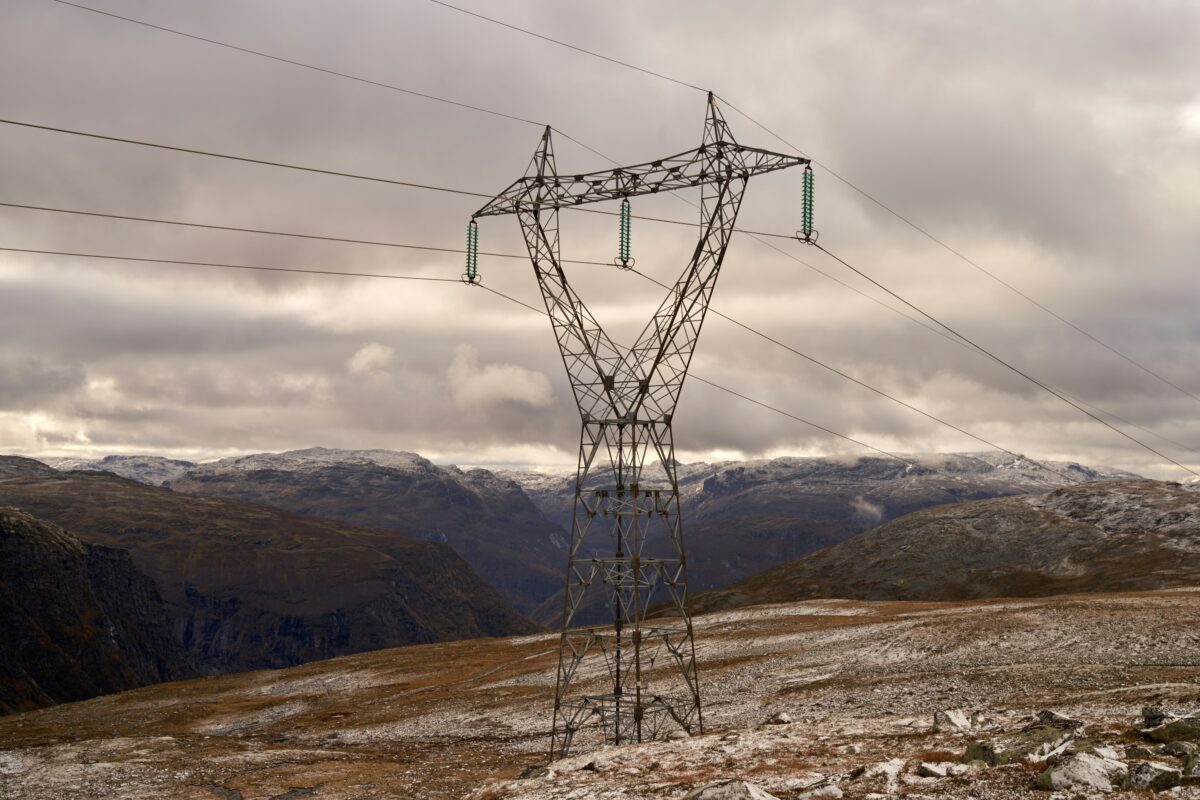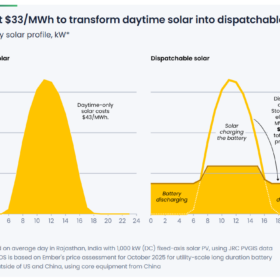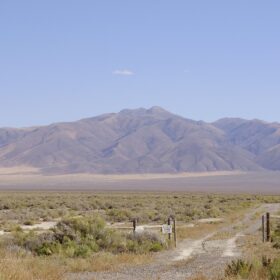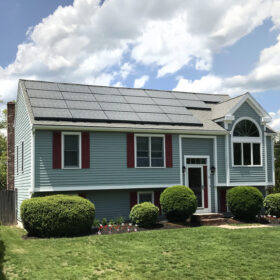The electricity grid is expected to be increasingly affected by climate change and the resulting severe weather episodes, which are predicted to multiply as our world heats up. Fires, floods, hurricanes and even extreme heatwaves will and are already having an impact on electricity transmission the world over. The recent events in Texas are an example: rapid and intense rainfall damaged critical infrastructure, including substations and transmission lines, leading to both power loss in the affected areas and challenges in restoring full service quickly and effectively.
A grid is considered resilient when it can either withstand the effects of severe weather or, if severe weather does stop it from functioning, when it is able to “bounce back” and restore electricity in the areas that have been deprived of it the most rapidly and effectively.
The U.S. Department of Energy puts it this way: “Withstanding and quickly recovering from extreme weather events must be a critical function of today’s electric grid.”
Ability to withstand extreme weather
The complexity in designing a weather-resilient electricity network arises from the different types of extreme weather: intense heat affects equipment differently from flooding, storms or tornadoes. According to this study, which looks at the impact of extreme heat on transmission lines in Australia, if transmission lines heat up too much, the amount of electrical current they can safely carry is reduced. As a result, “lower line ratings across the network can reduce supply on very hot days. It is also on these hot days that community electricity demand tends to increase, so the combined impact could reduce the reliability of the energy supply.”
The situation can even get worse: extreme heat can cause the metal conductor in the electric line to expand, which in turn can cause the line to droop. If it droops too much, it can make contact with foliage on the ground, resulting in a short circuit and an end to the line’s ability to carry power, causing even more electricity shortages.
Another factor is that extreme heat increases the electricity demand as people use more air conditioning. According to Energy Central, this summer’s record-breaking heatwaves in June pushed European electricity demand to winter-level peaks, forced shutdowns at nuclear and hydro plants, and exposed new pressure points across the grid.
Smart grids, underground power lines and waterproof tech
Smart grid technology is one way of dealing with electricity shortages: if the tech is effectively installed, it can automatically reallocate surplus energy to areas where it is needed – in other words, it can balance the grid. Data collected by sensors and artificial intelligence (AI) analysis enables operators to detect problems as they arise and deal with them more effectively.
While expensive, the burying of electrical lines is also a way of dealing with extreme weather. Many overhead electrical lines are old and were installed many years ago, compounding the problem – they are fragile and do not resist well to tornadoes or even fires. It remains to be seen whether the cost of burying lines is higher than the expense of repairing overhead lines. Targeting the areas most likely to be affected could be one of the ways forward, instead of burying all the lines. An example is FPL, a major electric utility in Florida, which reacted rapidly to U.S. Hurricane Ian in 2022: two-thirds of its customers had power back after just one day of outage and that was attributed to the utility’s underground neighbourhood power lines performing five times better than overhead power lines in southwest Florida.
Waterproof cables made of high-quality polymer materials, which are well sealed at the joints, are also a way to withstand some of the effects of flooding. Torrential rains and flooding can lead to short circuits, substation failures, and accelerate the aging of cable insulation as well as the corrosion of metallic components. The submersion of transformers, switchgear or other critical equipment can give way to widespread power outages and pose significant safety hazards. High humidity levels can lead to the deterioration of the insulation properties of cables. Ensuring equipment is waterproof is a must.
Microgrids are becoming essential
Other measures include the use of microgrids. These can connect to and disconnect from the larger utility grid to operate in either grid-connected or island mode. If they are installed in areas where there are shortages due to extreme weather, they can supply continuous power during a grid outage through the use of energy storage or backup/standby generators. More and more microgrids are being installed: according to Global Market Insights, the global microgrid market was valued at USD 22,9 billion in 2024 and is set to witness a compound annual growth rate (CAGR) of 19,2% from 2025 to 2034, due to the rising demand for energy resilience, renewable adoption and stricter environmental policies.
Microgrids are also key equipment in helping utilities bounce back from a global outage. Japan is regularly exposed to extreme weather situations as well as frequent earthquakes. Even before the Fukushima nuclear disaster, the country had invested in microgrid technology that enabled it to better face the huge challenges caused by the earthquake and resulting tsunami.
The Japanese city of Sendai used its microgrid to maintain essential services such as electricity, telecommunications and water to hospitals, retirement homes and other structures immediately after the 2011 earthquake. Since the city’s gas network remained intact, gas engine generators were able to function as the main power supply for the microgrid.
IEC Standards are a prerequisite
A plethora of IEC Standards ensures electricity is generated and transmitted to our homes safely. They deal with overhead lines, cables, electrical conductors, insulators, power transformers, to only mention a few. An IEC technical committee, IEC TC 14, publishes the IEC 60076 Standards that cover all aspects relating to transformers, from test methods to loading guides and measuring methods for loss, for example. IEC Standards also help utilities to roll out energy-efficient technologies, from high-efficiency transformers to more energy-efficient conductors.
Others pave the way for the digitalization and the automation of the electrical grid. Standards for the smart grid are developed by IEC TC 57. It publishes the IEC 61850 series, core publications applicable to the implementation and interoperability of smart grids, including, for instance, substation automation, as specified in IEC 61850-4. IEC TC 8 publishes several documents that specify the design and management of microgrids. IEC TS 62898-1 establishes guidelines for microgrid project planning and specification.
Published by a joint IEC and ISO committee that prepares standards for the IoT, ISO/IEC 30101 deals with sensor networks and their interfaces with the smart grid. More broadly, IEC 63515 is a technical report providing a conceptual framework for power system resilience. This framework defines terminology for resilience, metrics for evaluating grid robustness, methods to identify weak points, and strategies to improve resilience (such as redundancy, decentralization, and smart grid functionalities).
These essential documents enable the grid to perform at its best and to overcome the challenges of climate change.
Author: Catherine Bischofberger
The International Electrotechnical Commission (IEC) is a global, not-for-profit membership organization that brings together 174 countries and coordinates the work of 30.000 experts globally. IEC International Standards and conformity assessment underpin international trade in electrical and electronic goods. They facilitate electricity access and verify the safety, performance and interoperability of electric and electronic devices and systems, including for example, consumer devices such as mobile phones or refrigerators, office and medical equipment, information technology, electricity generation, and much more.
The views and opinions expressed in this article are the author’s own, and do not necessarily reflect those held by pv magazine.
This content is protected by copyright and may not be reused. If you want to cooperate with us and would like to reuse some of our content, please contact: editors@pv-magazine.com.








By submitting this form you agree to pv magazine using your data for the purposes of publishing your comment.
Your personal data will only be disclosed or otherwise transmitted to third parties for the purposes of spam filtering or if this is necessary for technical maintenance of the website. Any other transfer to third parties will not take place unless this is justified on the basis of applicable data protection regulations or if pv magazine is legally obliged to do so.
You may revoke this consent at any time with effect for the future, in which case your personal data will be deleted immediately. Otherwise, your data will be deleted if pv magazine has processed your request or the purpose of data storage is fulfilled.
Further information on data privacy can be found in our Data Protection Policy.